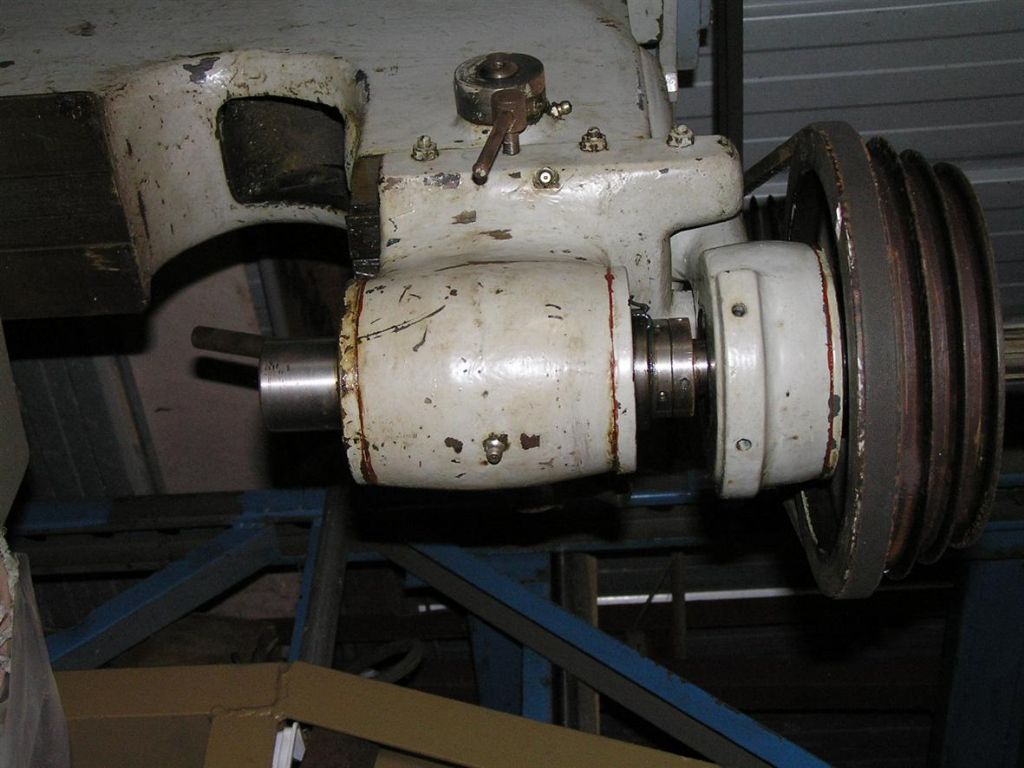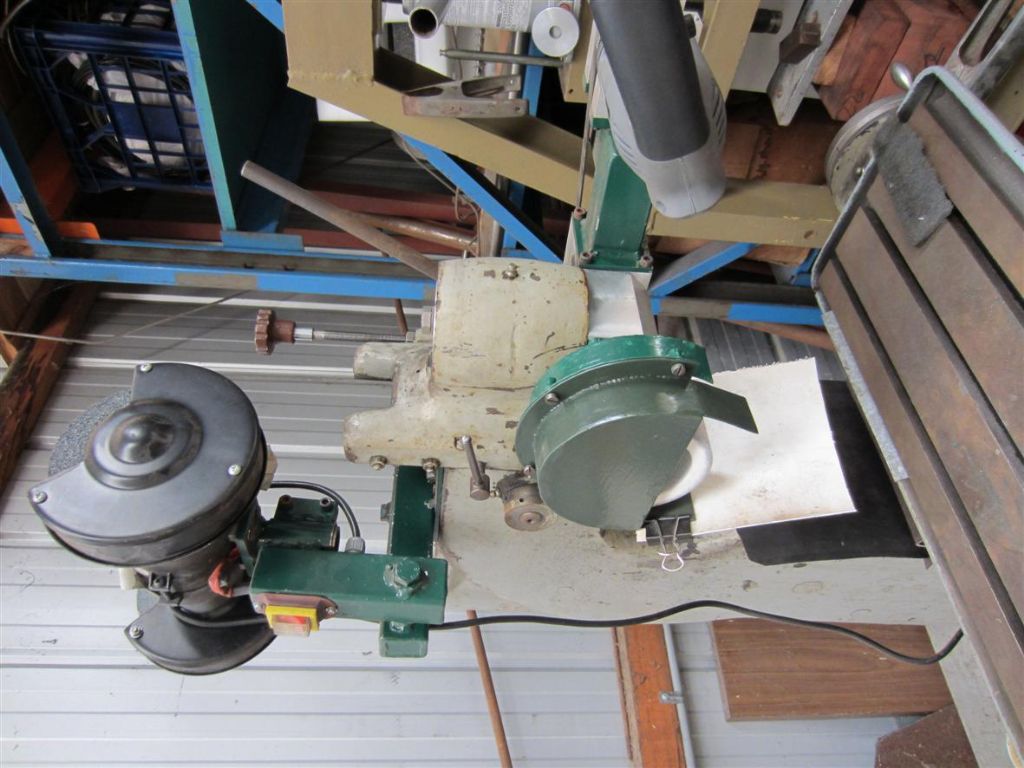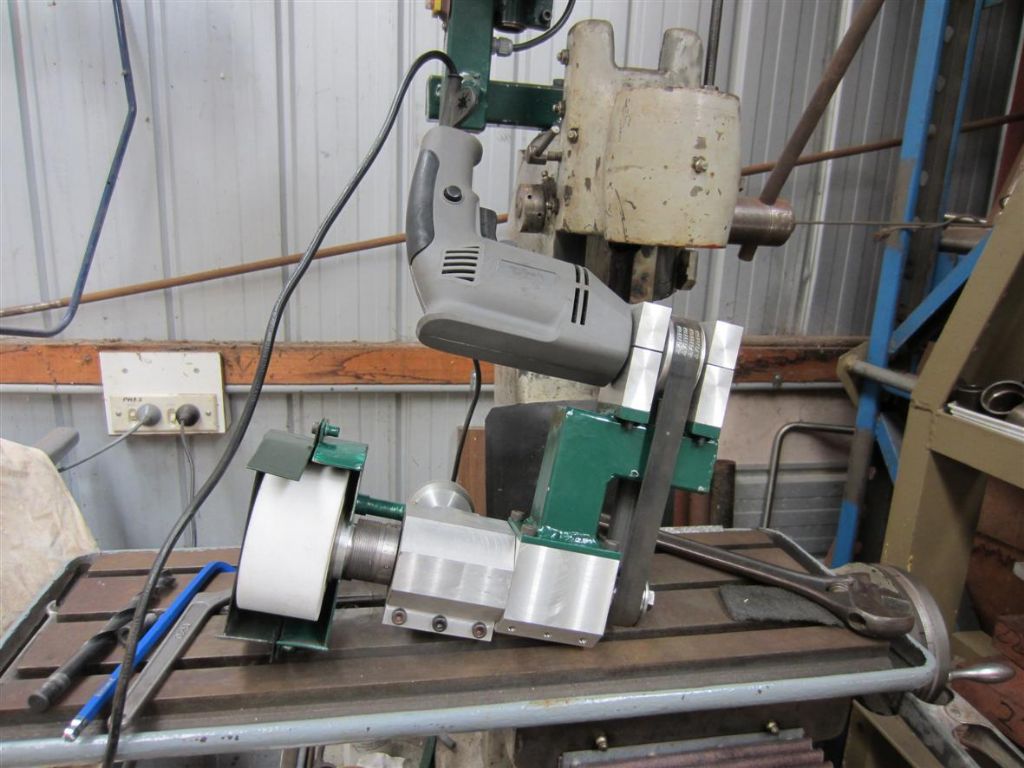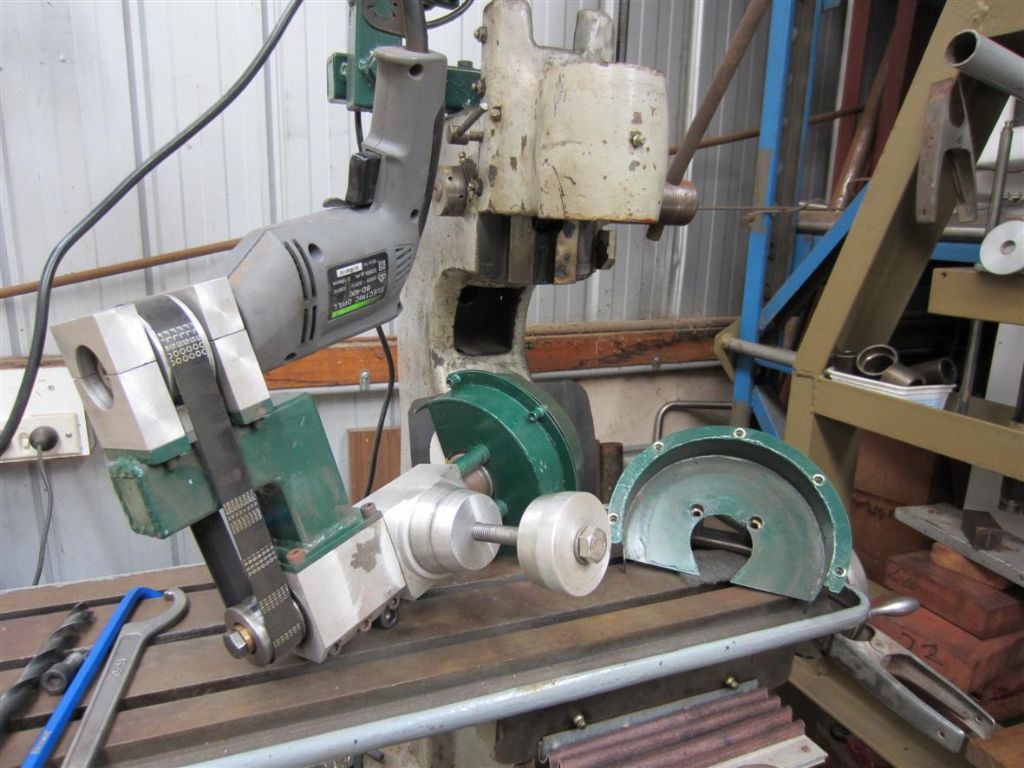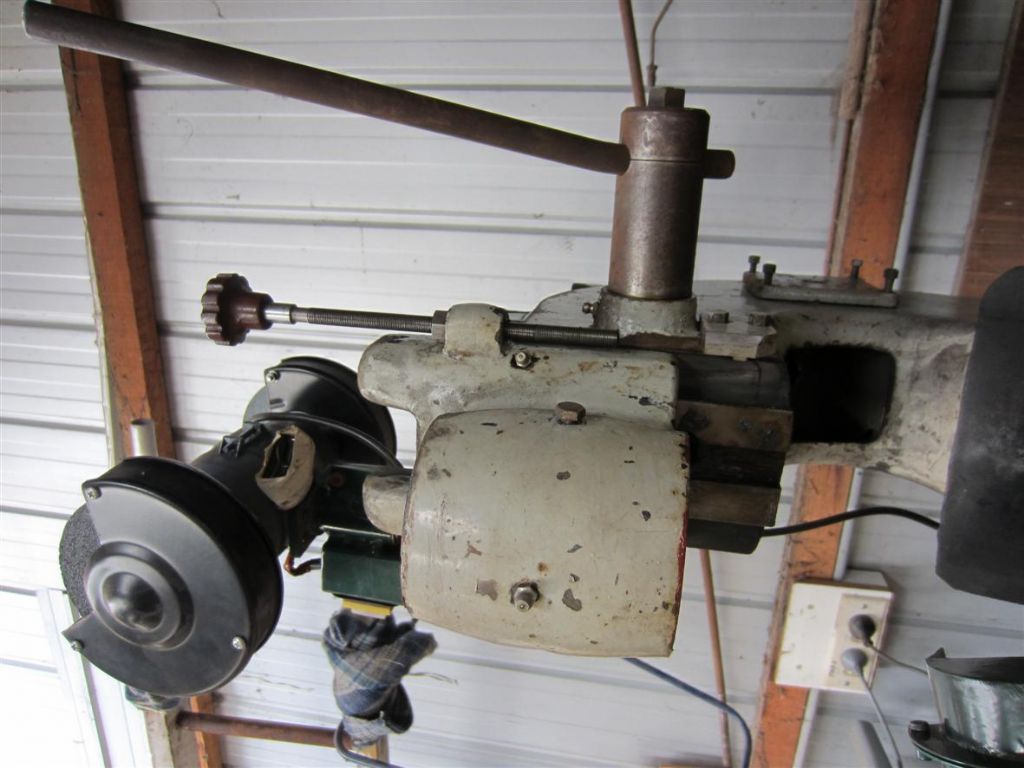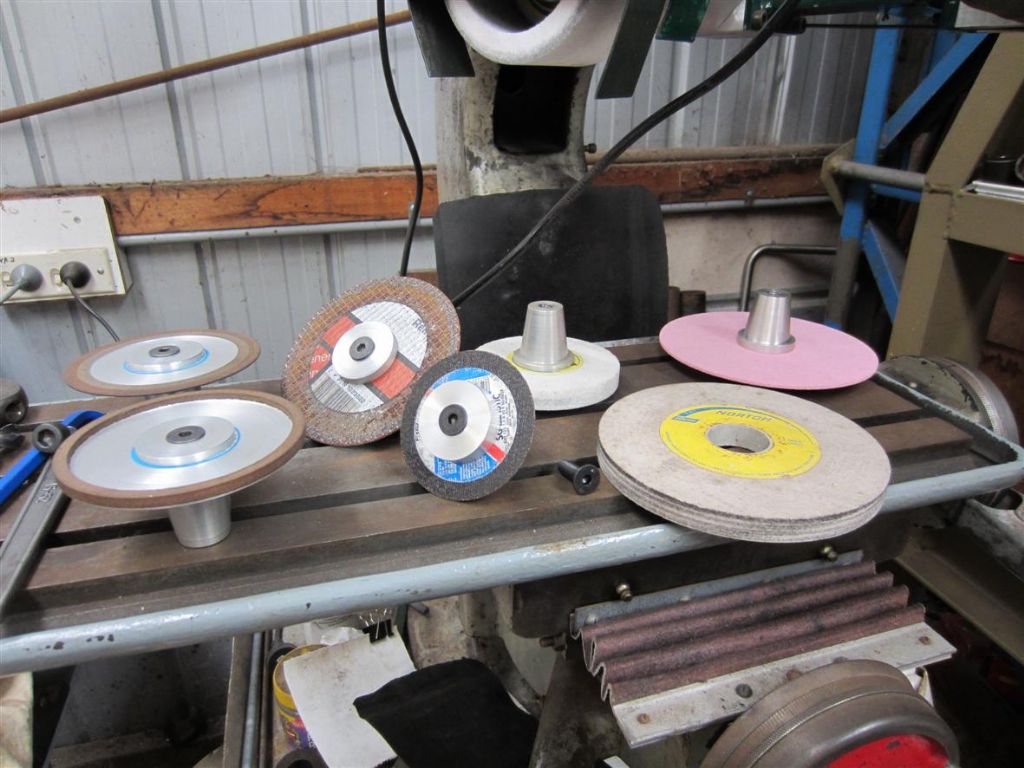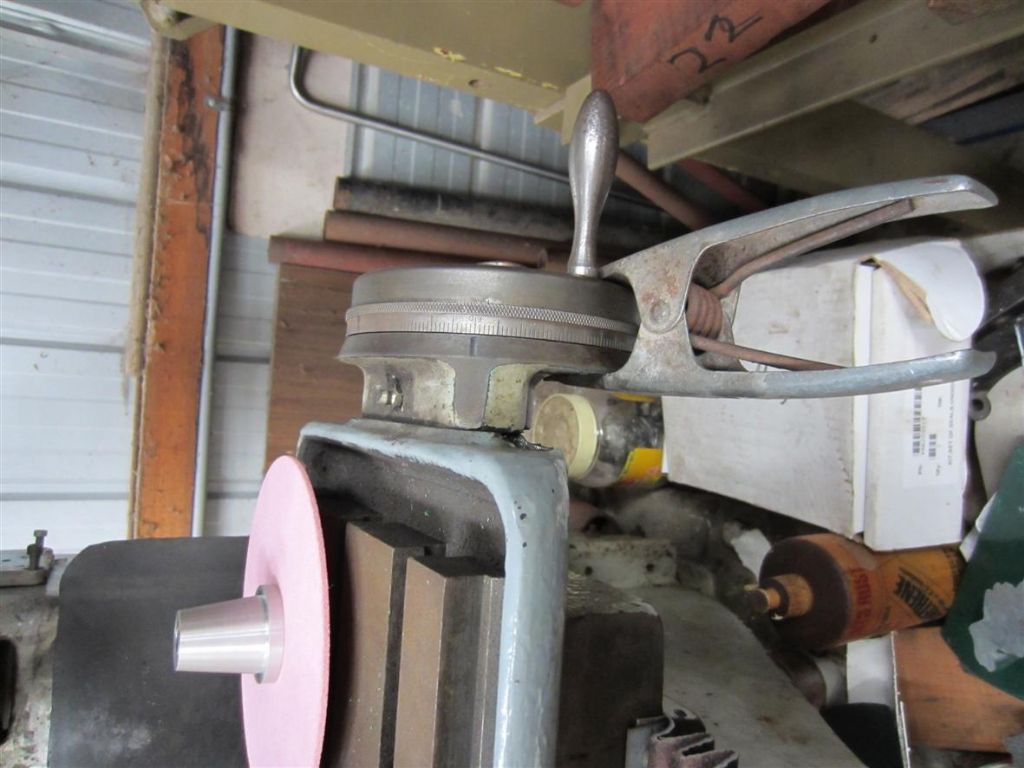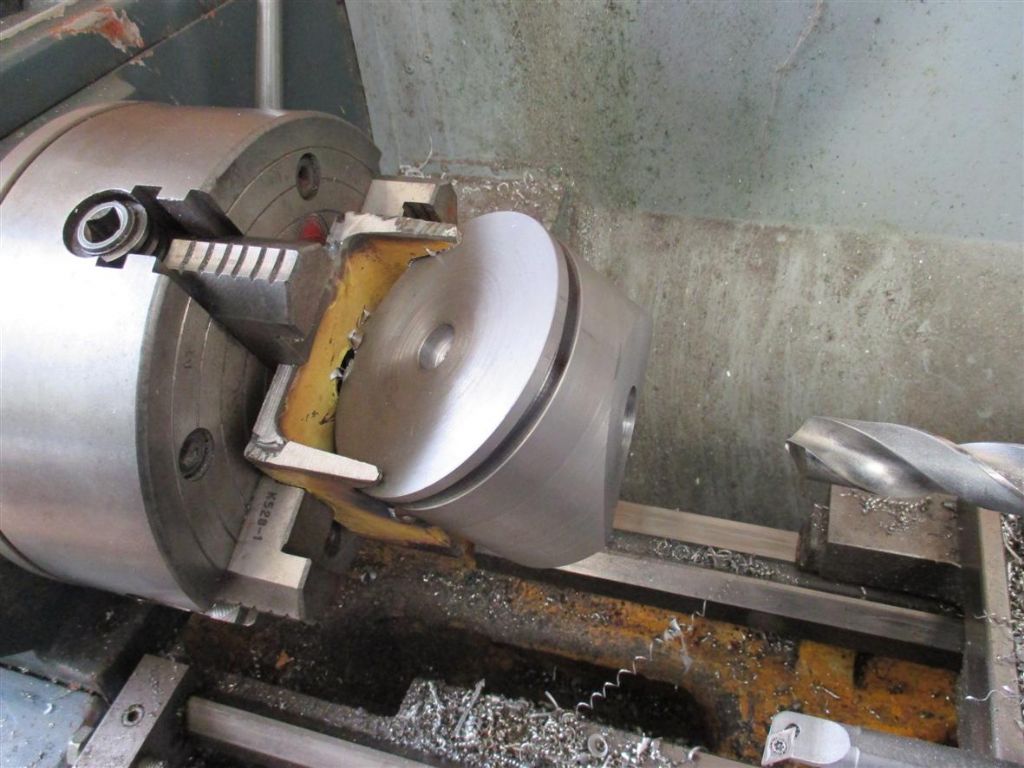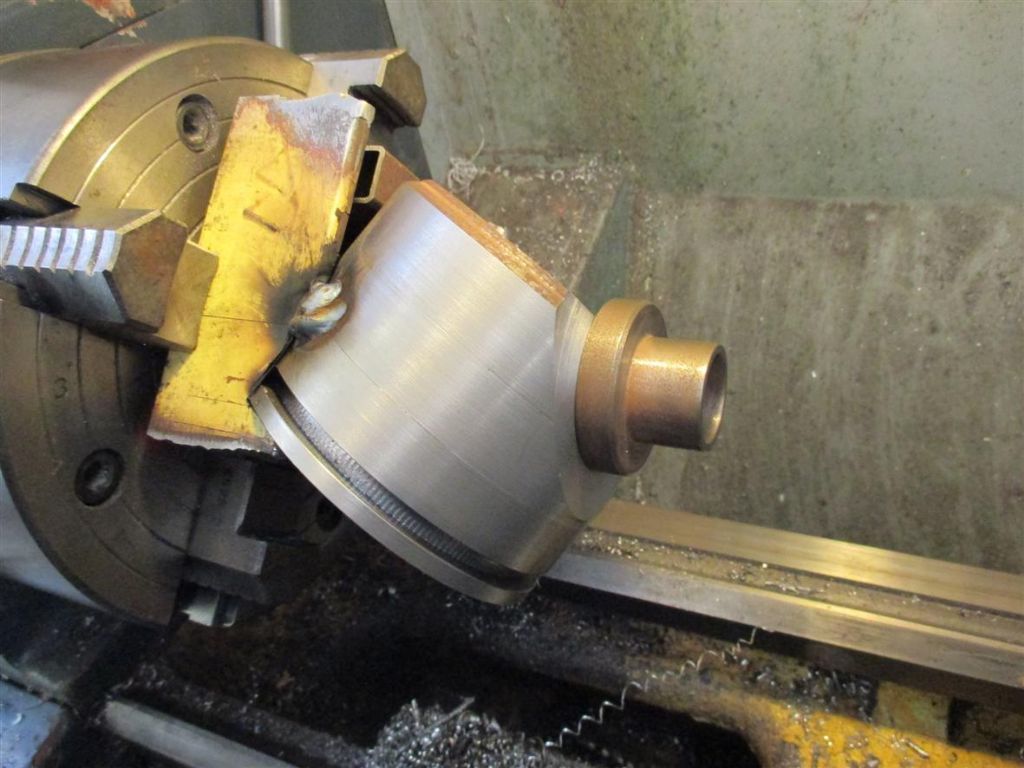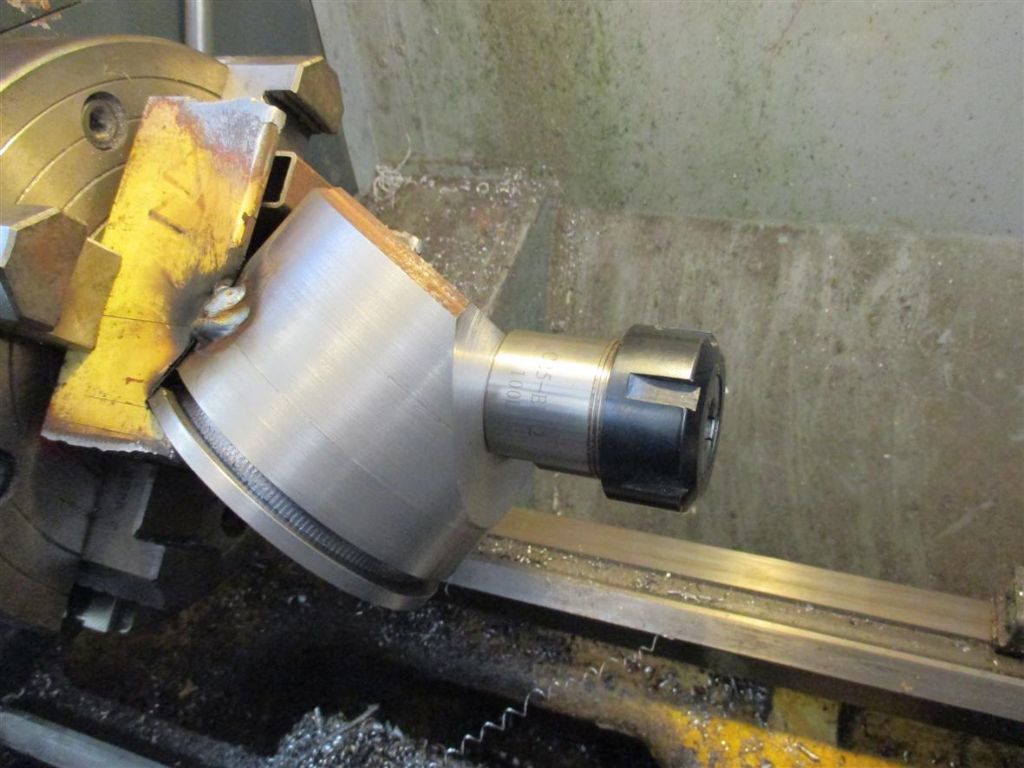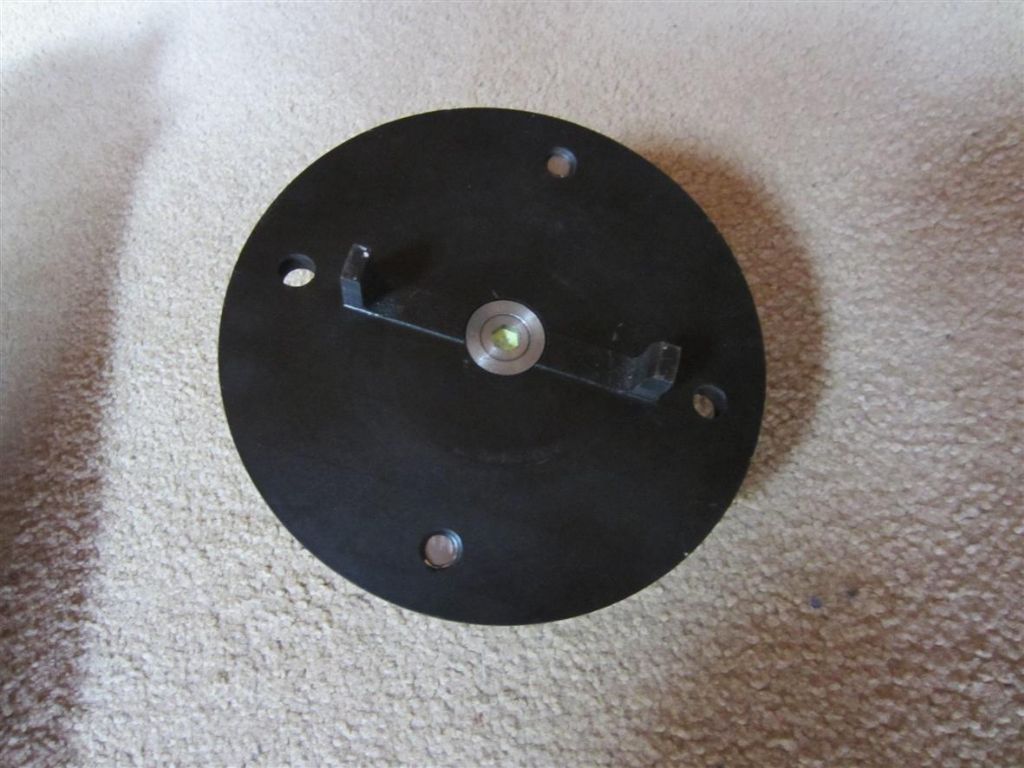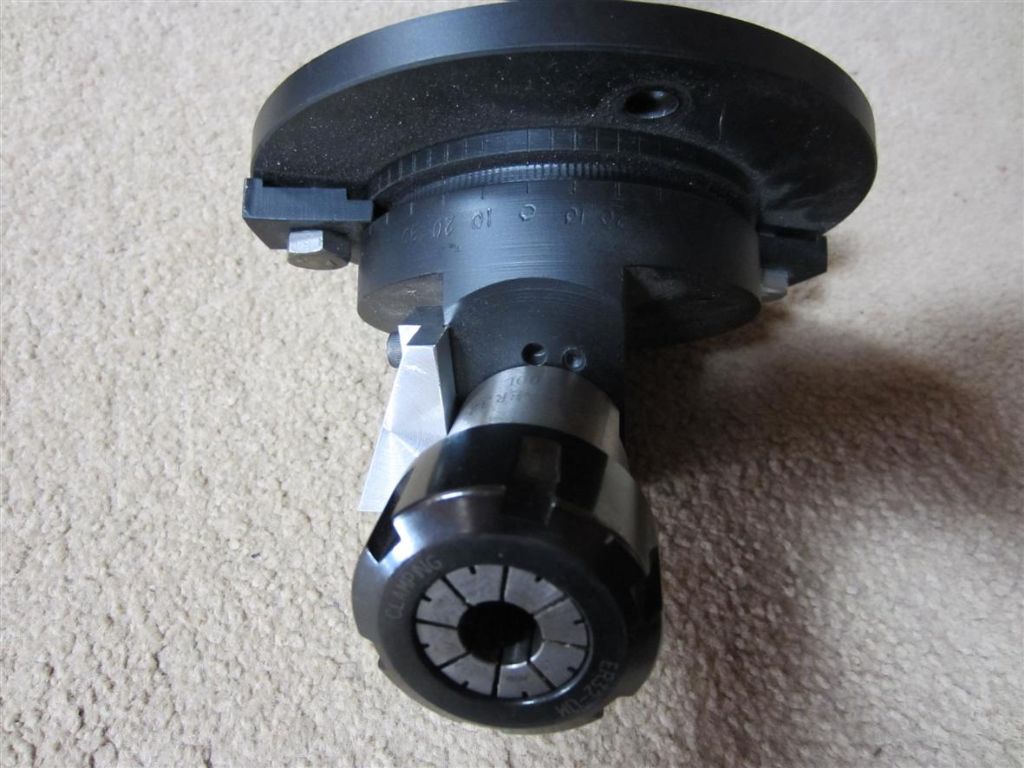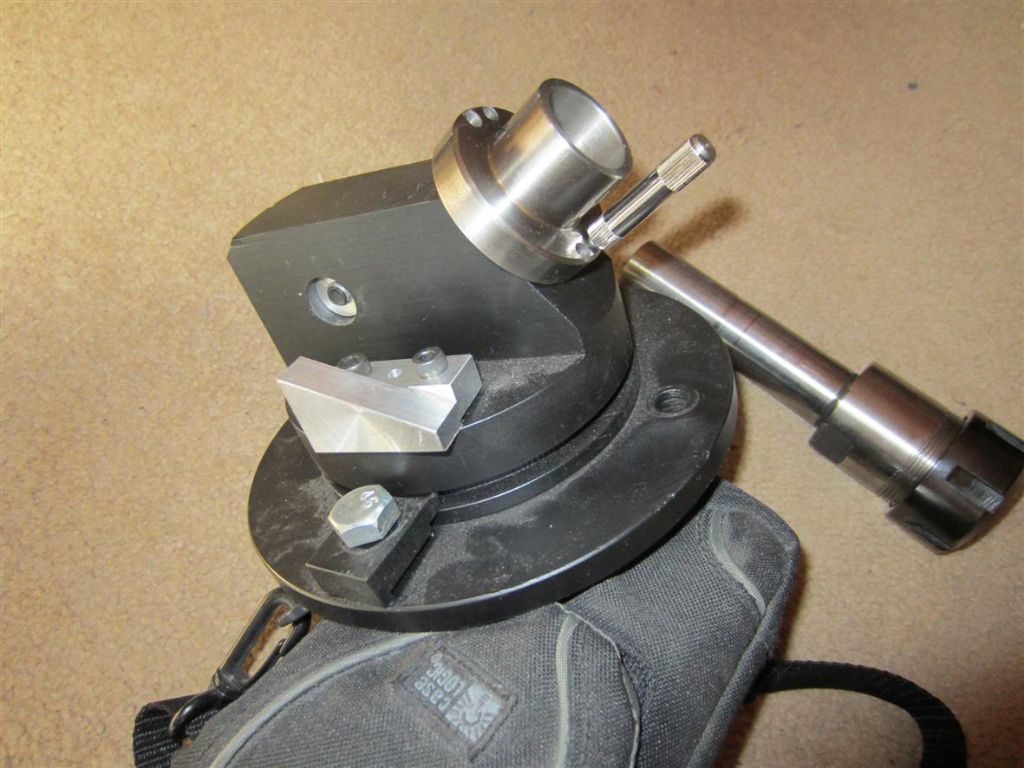Had this on the end of my first post. Should have started a new one.
Thank you for your reply's. Please be patient the photo's to still be uploaded are post production.
I will combine the old mill conversion with the 4 facet grinding jig. The old mill was picked up at auction some time ago. M3 spindle on large taper roller bearings with a belt drive. The spindle head is on a vertical dovetail slide with a rack and pinion to raise and lower. A fine 3/8"bsf thread for spindle height / depth stop. 
The height over table was limited, so the pillar holding the knee adjusting nut was shortened. New acme table nuts were cut on the lathe. The old ones had worn to a whitworth profile. New lead screws made and the table re ground. As a mill using M3 collets it was very average. Lots of pounding on the draw bar to release the collets. Have use R8 ever since.
A 50mm dia grinding spindle was made using taper roller bearings. Ref Workshop practice series No27. The original idea was to use a cheap Aldi 5" grinder to power it. After removing the gaiter springs from the oil seal each end it was still puffing and panting. More power was needed. A cheap pistol drill came to service. A flat belt pully was made to screw on instead of the chuck and the drill mounted by the universal round boss behind the chuck. Back to the mill. Remove the spindle and inner parts of the roller bearings. This leave two opposing tapered seats orientated vertical to the table with raise and lower movement and depth stop.
A block of aluminium was bored 50mm for the spindle. At right angle to this a post with a male taper seat to match the bottom taper roller outer shell. A second taper seat was made to seat in top bearing shell. This gave a horizontal spindle which could be rotated about the vertical axis to a limited extent. 



The spindle is hollow with an ER32 socket and flat belt drive. The grinding wheels are mounted to the spindle in a similar manner to a Quorn, except an ER32 taper size in aluminium with a m10 draw bar is used. This allows the spindle to use wheels or cutters mounted in collets. 
The wheel is raised and lowered to grind with the x axis used to increase cut. Now this is good for the 4 facet jig. Cut one face and raise the wheel. Rotate 180 deg. and cut the other face without changing the table position. 
This may upset some readers but, I have a number of wheel mounts with worn angle grinder cutting disks. Cheap and quite ok for gear cutter grinding, the thin 1mm thick disks flex a lot, the 3mm ones are better. As the wheel moves at right angles to it's rotating axis the cut is on the outer edge.
Brian H.


